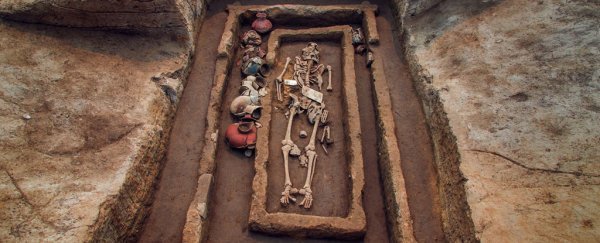It is also thought to be the first of its particular species – Temnodontosaurus trigonodon – to be found in Britain.
Marine reptiles that lived alongside the dinosaurs, ichthyosaurs resembled dolphins in body shape. They became extinct around 90 million years ago, after first appearing 250 million years ago.
The ichthyosaur was first uncovered in February 2021 in the Rutland Water Nature Reserve by Joe Davis, a conservation team leader from Leicestershire and Rutland Wildlife Trust, which operates the nature reserve in partnership with owner Anglian Water.
Davis was undertaking routine re-landscaping work, which involved draining the water in the lagoon, when he spotted parts of vertebrae sticking out of the mud, the Leicestershire and Rutland Wildlife Trust said in a press release.
Then followed a large-scale excavation in August and September by a team of paleontologists, led by Dean Lomax, an ichthyosaur expert and current visiting scientist at the University of Manchester.
“The size and the completeness together is what makes it truly exceptional,” Lomax told CNN, adding that previous finds of ichthyosaurs in the UK had been “nowhere near as complete and as large as this.”
Lomax said it was the most complete large specimen – which he classified as being 10 or more meters in length – found globally. He said it was “a really fantastic discovery” as well as, for him, “a real career highlight.”
“This was a top of the food chain, apex predator,” he told CNN of the discovery. “So this would have been dining on other ichthyosaurs, it would have been eating large fish, it would have eaten, if could catch them, squids as well.”
However, Lomax said the discovery was the “tip of the iceberg,” with much left to uncover of the specimen after chunks of rock have been cleared away, with the possibility that the ichthyosaur’s last meal may have been preserved or even that the reptile could have been pregnant.
“It was just mind blowing,” Regan Harris, a spokeswoman for Anglian Water, told CNN. “I mean, you kind of couldn’t really believe your eyes when you were looking at it in front of you. But yeah, incredible.”
Harris, who was onsite for the excavation, said smaller ichthyosaurs had previously been found on the Rutland Water site, but the “sheer scale” and “well preserved” nature of this particular discovery made it unique.
Paul Barrett, Merit Researcher in the Earth Sciences Vertebrates and Anthropology Palaeobiology department at the Natural History Museum in London, said the Rutland ichthyosaur was “probably one of the largest fossil reptiles ever found, including dinosaurs.” Barrett was not involved in the find.

































